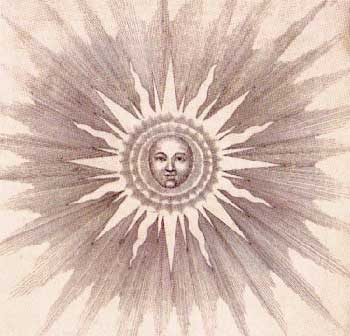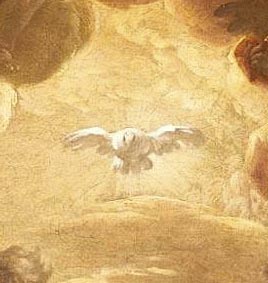The Absolute and the Relative |

|

|
| Written by Franklin Ugas | |
|
(ESSAY) INTRODUCCIÓN
DEVELOPMENT OF THE THEME

‘ABSOLUTE’ and ‘RELATIVE’ are two terms that provoked, in the oriental and the occidental world, terrible intellectual controversies and eager polemics that in the end don’t lead to anything but only create irreconcilable separations. And it happens that, as the Venerable Master Samael Aun Weor signals in his book ‘The Great Rebellion’, ‘two minds, very disciplined in intellectual iron structures, discussing among themselves or arguing about this or that reality, believe, each one of them, in the exactitude of its own concept and in the falsity of the concept of the one next to it.’ And later the Master asks: ‘Which one of them is right?, who could, honestly, guarantee in one case or the other, in which one of them would the concept and the reality be identical?’ EThe problem is that, because of the existing opinions, the world is divided in two big groups: the materialists and the spiritualists (see the conference of the Venerable Master Samael, called ‘Spiritualism, Materialism and Dialectics’). PFor the followers of dialectical materialism everything is relative, and on the basis of this Formal Logic premise they affirm that ‘nothing can transcend this relativity’, ‘that the absolute doesn’t exist’; but, on the field of spiritualism with its different forms, the hierarchs establish ‘belief dogmas’ that must be accepted as ‘absolute truths’ and even incontestable, under punishment of ‘excommunication’. 
Curiously, inside the spiritualist movement at the end of the 19th century and the beginning of the 20th century, the pseudo-esoteric organizations also established dogmas with an ‘absolute’, determined and conclusive character, as for example the evolution dogma, copied from the materialist science and transplanted to the doctrines that sustain man’s interior development. In this tangled maze of opinions, the ones of the right-wing, that is to say the materialists, and also the ones of the left-wing, that is to say the spiritualists, are believers and even empirics, but never researches or connoisseurs through direct experience of what they sustain with so much ‘logical rigor’. The all time Gnosis, the one that always taught us how to obtain the openness of the interior mind in order to think with true freedom, without any dogmas, affirms that ’the Absolute exists’, and that ‘it is the causa-causorum or the real origin of the great machinery of relativity, that is to say of the Infinite Universe with its different dimensions and the various ranges of phenomena that are processed inside it.’ 
The Orientals call ‘Paratantra’, the world of phenomena in which everything is dual and relative, submitted to continuous changes and transformations; but, what the religious and scientific thinking generally ignore is the fact that besides this duality, there is a third force that reconciles the contraries, that is to say: a third neutralizing force that allows us to reach to the understanding of affirmation and negation, of day and night, of light and dark, of life and death, of God and Satan, etc., reaching like this to the very root, to the first causes of dualism This third force, to which we make reference, is ‘TAO’, is the Superlative Conscience of the Being, the Center of a Magic Circle from which we can mediate through understanding the logical confrontations at the right and at the left of the Pendulum. By using the investigation capacities of his own Being, the Master Samael Aun Weor researched the ancient secret texts of the oriental wisdom and in his work ‘My return to Tibet’ he says the following (Chapter 1, ‘The Seven Eternities’): The Absolute Abstract Space is the causa-causorum of everything that is, was and will be. The profound and happy space is, definitely, the Mysterious Deity, the mystical ineffable root of the seven cosmoses, the mysterious origin of everything we know as Spirit, Matter, universes, suns, worlds, etc. This one, the Divine, the Space of Happiness, is a terrible reality beyond the Universe and the Gods’… ‘That one has no dimension and is, truly, what it is, what has always been and what will always be; it is the life that palpitates intensely in every atom and in every Sun... 
The Venerable Master Samael continues his work, telling us that: ‘That one - the Absolute – is the root of Spirit and Matter, but is neither one nor the other. That one transcends the laws of Number, Measure and Weight, width, quantity, front, back, up, down, etc. That one doesn’t belong to Time and is beyond the perception of silence, sound and hearing; That one is the Immutable in the profound divine abstraction, light that has never been created by a God or by a Man; That one is the one that has no name.’ Further on, the Master explains us which is ‘the first difference or modification of That one in front of which the Gods and the Men tremble’, and talks about ‘The Great Ocean of the Spirit, of Brahma’, clarifying that ‘Brahma is Spirit, but That one, the one that is not manifested, is not Spirit, but Uncreated Light’. So, Master Samael illustrates this theme of the Absolute and the Relative that has a great importance for the objectives that we have in Gnosis, given the fact that in the cultural-spiritual background of the modern era there is a psychological danger that is found in the opinion – very spread of course – according to which ‘it is not possible to reach the absolute, total, radical and final knowledge’. 
The evil influence of this absurd way of thinking was not yet properly analyzed. Still, the intellectuals’ behavior, religious or scientists, is contradictory, because it is supposed that what is always pursued through education and through the religious systems is what they call ‘excellence’, or the improvement of the human species and of its actions. The occidental theologians, for example, unfortunately bottled themselves in the predestination dogma, through which, next to faith, the possibility of a ‘sanctity’ or of an ‘absolute perfection’ of certain characters chosen or selected by God, is accepted. Meanwhile, on the other side, the crowds take refuge in the fact that ‘old habits die hard’, or justify their psychological errors with phrases like ‘making mistakes is human’... 'In the Gnostic movements there is no predestination dogma. The serious Gnostic – underlines the Venerable Master Samael Aun Weor – is someone chosen a posteriori’, that is to say, he chooses himself. There is a phrase that says: ‘God has no favorites, but sons who prefer Him’. A lot of reflexive study and psychological and spiritual, real and conscious refinement are needed in order to be able to understand that there is a Direct Path that always shows us the return towards the Absolute. Notice that even though people always search for stability, they aspire though to what is immortal, to what has continuity, because - we want it or not – too much relativity provokes unrest to an ignorant, but the Gnostic or the connoisseur dedicate themselves to the transcendence of the Relative in order to launch themselves towards the Absolute. 
Comments (0)
 Write comment
|
| < The Truth |
|---|
| Science |
| Art |
| Philosophy |
| Mysticism/Religion |
| Barbelo: Gnosis Magazine |